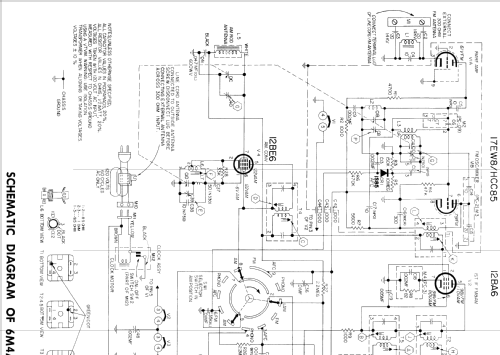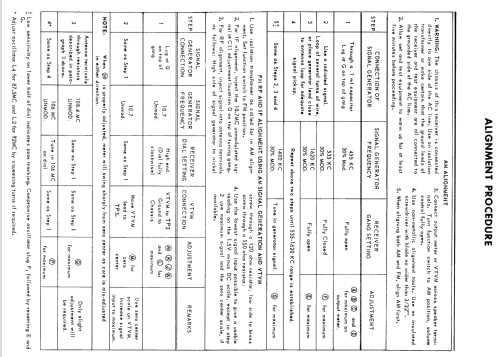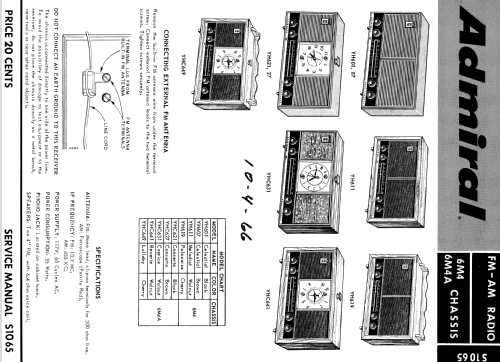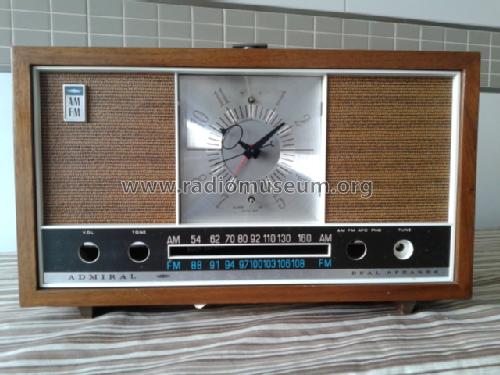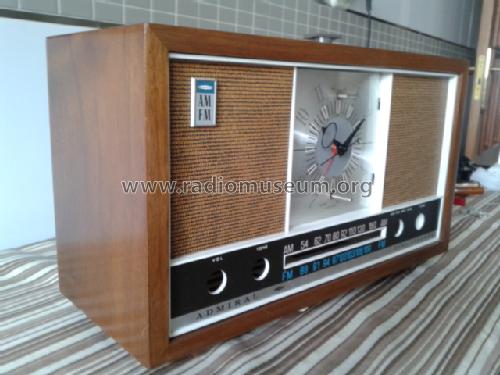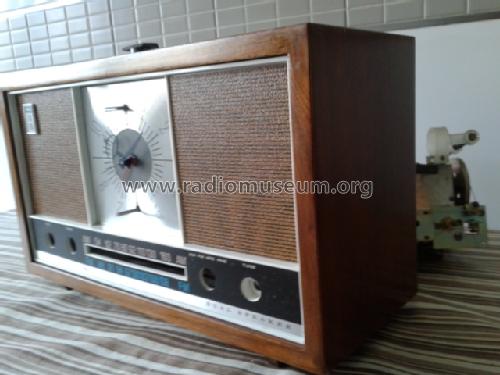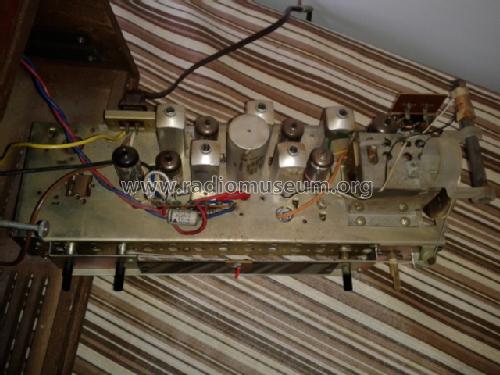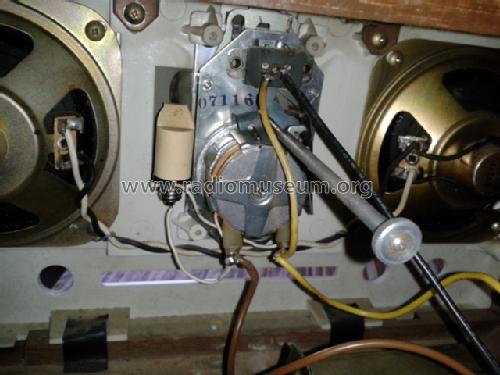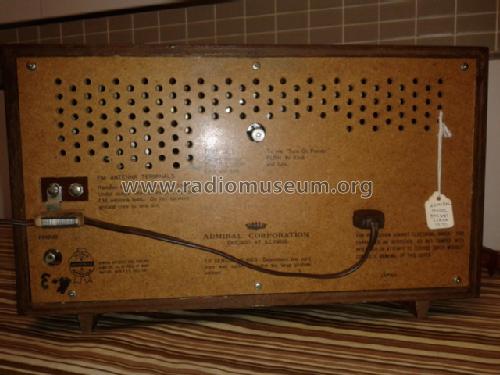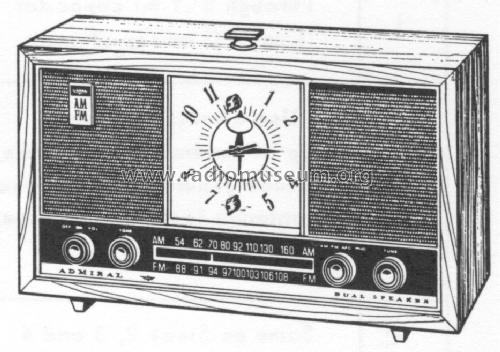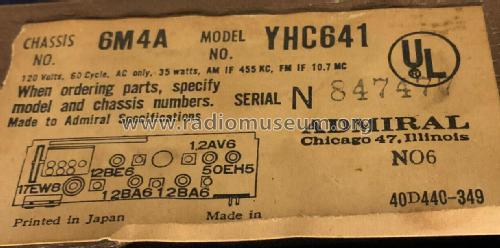YHC641 "Reverie" Clock Radio Ch= 6M4A
Admiral (brand) Continental Radio & Television Co.; Chicago, IL
- Country
- United States of America (USA)
- Manufacturer / Brand
- Admiral (brand) Continental Radio & Television Co.; Chicago, IL
- Year
- 1966/1967 ?
- Category
- Broadcast Receiver - or past WW2 Tuner
- Radiomuseum.org ID
- 95211
-
- alternative name: Continental Radio & TV
Click on the schematic thumbnail to request the schematic as a free document.
- Number of Tubes
- 6
- Main principle
- Superheterodyne (common); ZF/IF 455/10700 kHz; 2 AF stage(s)
- Tuned circuits
- 6 AM circuit(s) 8 FM circuit(s)
- Wave bands
- Broadcast (BC) and FM or UHF.
- Power type and voltage
- Alternating Current supply (AC) / 60 cycles, 120 Volt
- Loudspeaker
- 2 Loudspeakers / Ø 4 inch = 10.2 cm
- Material
- Wooden case
- from Radiomuseum.org
- Model: YHC641 "Reverie" Clock Radio Ch= 6M4A - Admiral brand Continental
- Shape
- Tablemodel with Clock ((Alarm-) Clock Radio).
- Notes
-
The Admiral YHC641 is an AC operated 6 tube BC and FM band receiver. Has Qty(2) 4" PM speakers. Cabinet color is Walnut. Has Ferrite Rod for AM antenna and uses line cord for FM antenna. Has external phono input jack located on rear of cabinet. Power Consumption 35 Watts.
The following models use the same schematic but have different cabinets and colors:
Model Number Cabinet and Color YHC621 Plastic - Black YHC627 Plastic - Brown YHC631 Wooden - Walnut YHC641 Wooden - Walnut YHC649 Wooden - Cherry For more information on the Y-models including colors see this link.
Made in Japan
- Circuit diagram reference
- Beitman Radio Diagrams Vol. 27, 1967-69 (last vol.)
- Literature/Schematics (1)
- Beitman Radio Diagrams, vol. 27, 1967-69 (last volume) (Pages 6, 7)
- Literature/Schematics (2)
- - - Manufacturers Literature (Admiral Service Manual S1065 Dated 7-66)
- Author
- Model page created by Egon Penker. See "Data change" for further contributors.
- Other Models
-
Here you find 3226 models, 1329 with images and 2592 with schematics for wireless sets etc. In French: TSF for Télégraphie sans fil.
All listed radios etc. from Admiral (brand) Continental Radio & Television Co.; Chicago, IL
Collections
The model YHC641 "Reverie" Clock Radio is part of the collections of the following members.
Forum contributions about this model: Admiral brand: YHC641 "Reverie" Clock Radio Ch= 6M4A
Threads: 1 | Posts: 2
Modelo restaurado y modificado para trabajar a 220 voltios. Se le ha añadido un reductor de voltaje en el interior. Se ha cambiado el piñon del motor del reloj para adaptarlo a 50 hz. El piñon original era de 10 dientes. Se le ha colocado uno de 12 dientes. De esta manera el reloj trabaja correctamente a 50 Hz.
Juan Sanchez feijoo, 25.Oct.13
